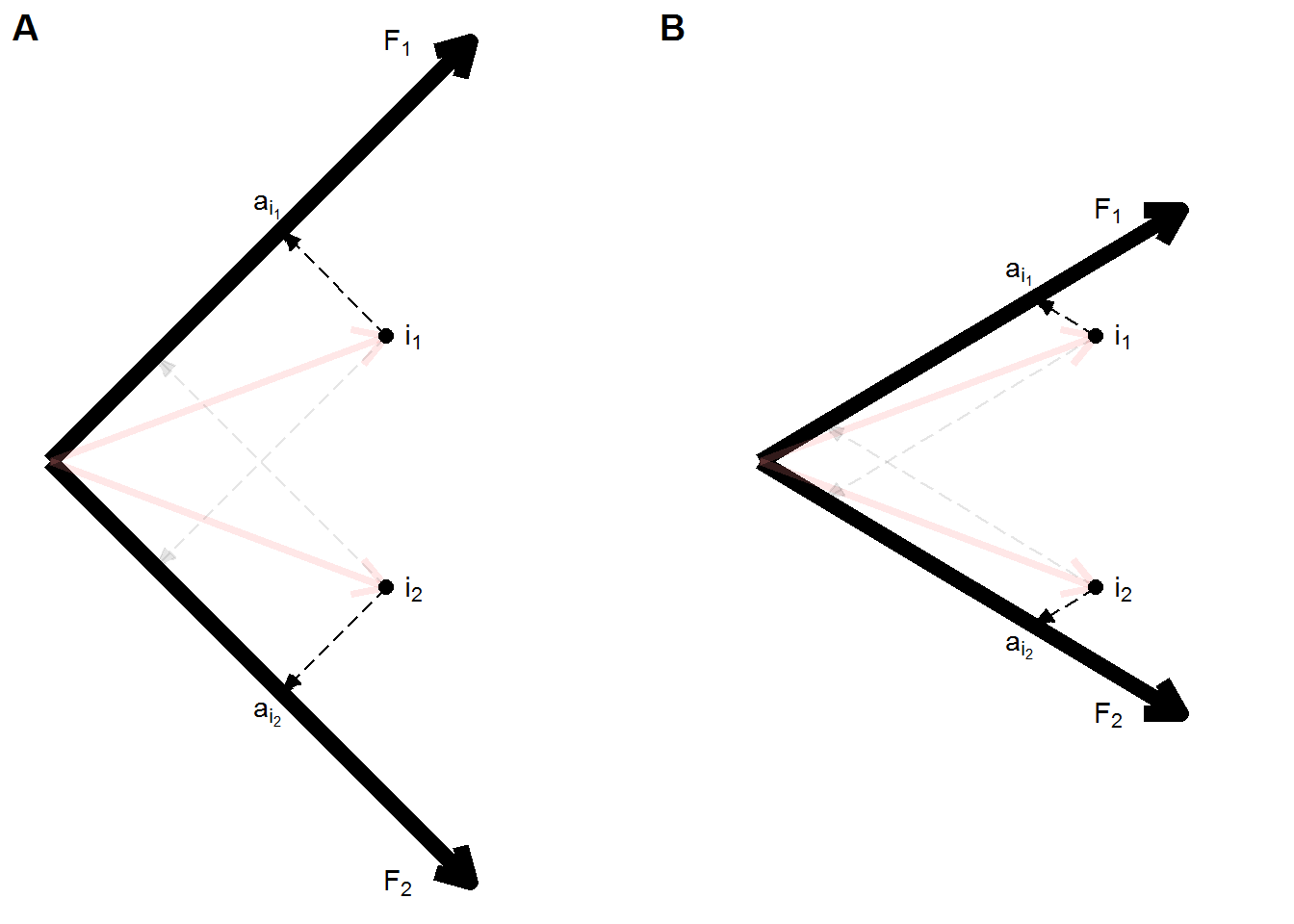Pocket guide to Exploratory and Confirmatory Factor Analysis in R

One single common factor
| i1 | i2 | i3 | i4 |
|---|---|---|---|
| i1 | |||
| i2 | |||
| i3 | |||
| i4 |
Two uncorrelated common factors
| i1 | i2 | i3 | i4 |
|---|---|---|---|
| i1 | |||
| i2 | |||
| i3 | |||
| i4 |
Two correlated common factors
| i1 | i2 | i3 | i4 |
|---|---|---|---|
| i1 | |||
| i2 | |||
| i3 | |||
| i4 |
In Confirmatory Factor Analysis, relationships among factors may be specified, giving rise to the ability to test higher-order structures. For example, the correlation between specific factors F1 and F2 could be accounted for by a higher-order general factor F.